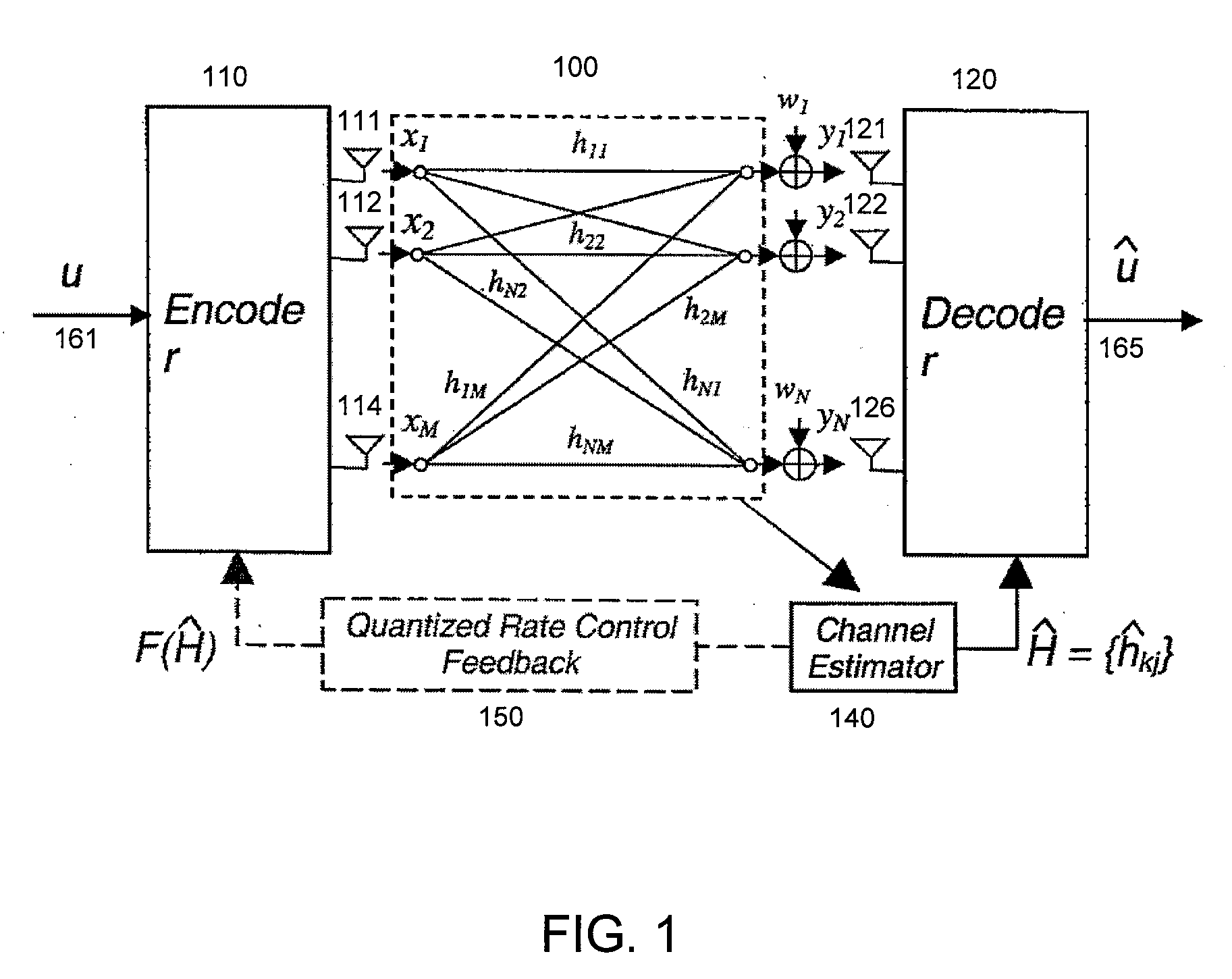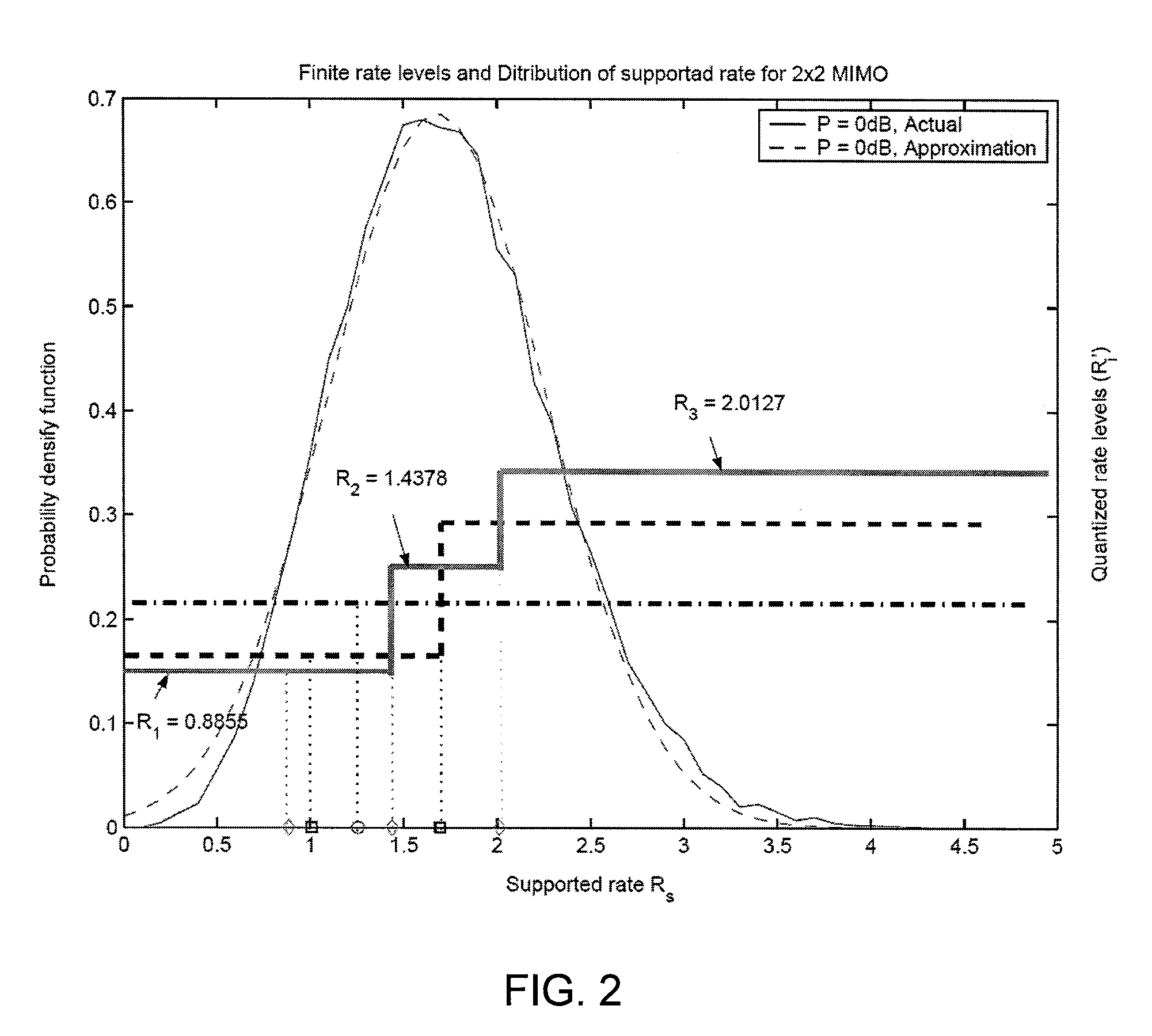Throughput Maximization Using Quantized Rate Control in Multiple Antenna Communication
a multiple antenna communication and rate control technology, applied in the field of wireless communication systems, can solve the problems of low probability of reliable decoding, inability to obtain channel state information, and receivers usually limited to using feedback links with very limited capacity, so as to optimize the throughput of the system, improve system throughput performance, and save power
- Summary
- Abstract
- Description
- Claims
- Application Information
AI Technical Summary
Benefits of technology
Problems solved by technology
Method used
Image
Examples
Embodiment Construction
[0009]FIG. 1 is an abstract illustration of a coded multiple-input multiple-output (MIMO) system, suitable for practice of an embodiment of the invention.
[0010] As depicted in FIG. 1, the multiple antenna system has M transmit antennas 111, 112, . . . 114 and N receive antennas 121, 122, . . . 126 which communicate across a channel 100. It is assumed that the system utilizes some form of coding scheme with an encoder 110 at the transmitter and a corresponding decoder 120 at the receiver. The multiple antenna system can be modeled as follows: the received signal can be represented by a vector yN×1 such that
y=Hx+w, (1)
where xM×1 is a vector representing the transmitted symbols, HN×M represents the channel matrix, and wN×1 is a circularly symmetric complex additive white Gaussian noise with zero mean and variance one. Consider a block fading channel model in which the channel remains constant during transmission of each packet (or codeword of length T) and changes independently fr...
PUM
 Login to View More
Login to View More Abstract
Description
Claims
Application Information
 Login to View More
Login to View More - R&D
- Intellectual Property
- Life Sciences
- Materials
- Tech Scout
- Unparalleled Data Quality
- Higher Quality Content
- 60% Fewer Hallucinations
Browse by: Latest US Patents, China's latest patents, Technical Efficacy Thesaurus, Application Domain, Technology Topic, Popular Technical Reports.
© 2025 PatSnap. All rights reserved.Legal|Privacy policy|Modern Slavery Act Transparency Statement|Sitemap|About US| Contact US: help@patsnap.com



